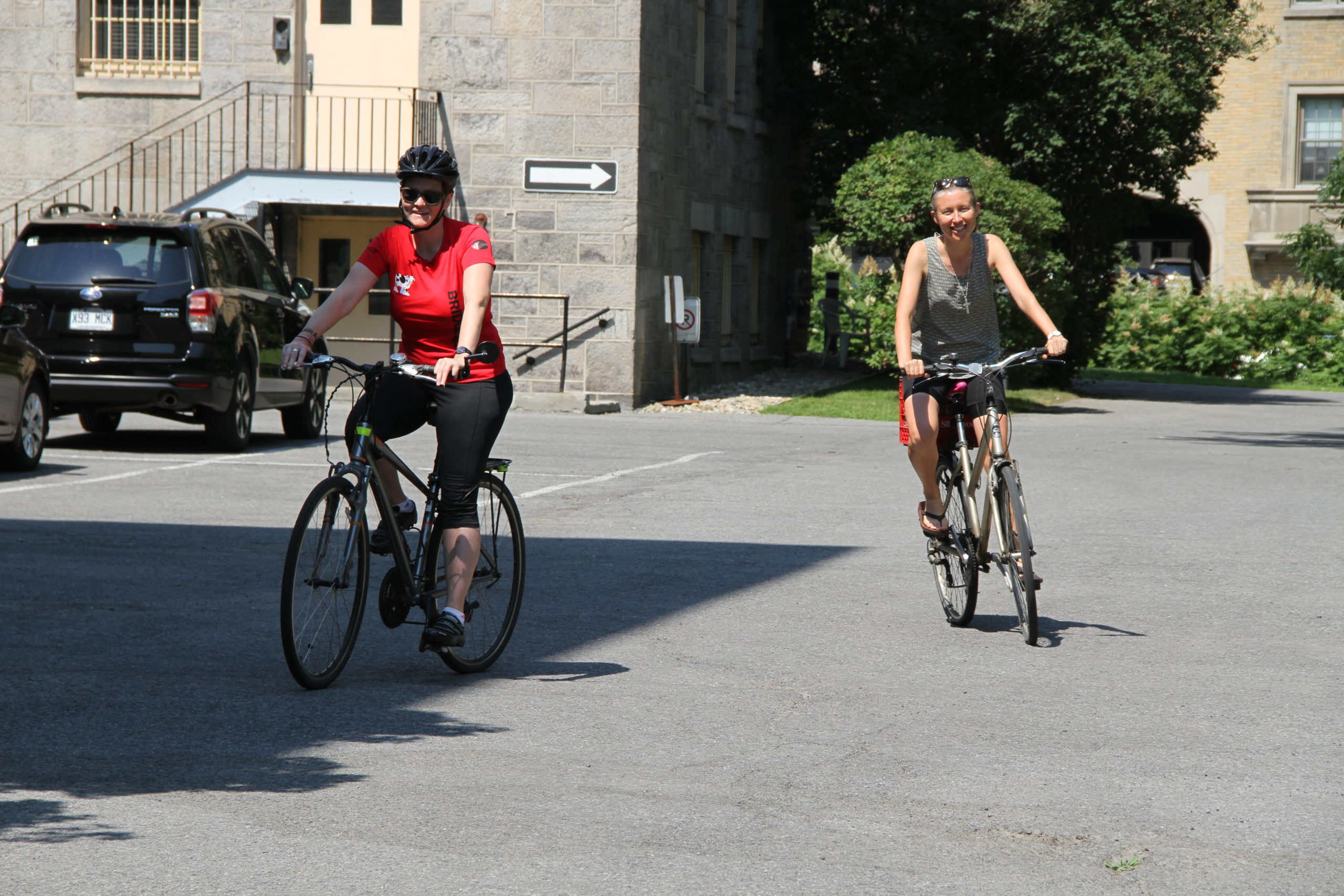THE GREEN LEAF – Active transportation
Many of us used to travel quite actively to work. What about when we work from home? Why maintain or integrate the use of active transportation into this new routine?
THE GREEN LEAF
NEWSLETTER BY THE GREEN COMMITTEE OF THE MOTHER HOUSE
Lord,
You made the children of Israel cross the sea with dry feet.
You showed the three Wise Men the way to You by guiding them with a star.
We pray you: give us a safe journey and good weather.
Do so that in the company of your holy angel,
We may arrive happily at the place we want to reach
And in the end, to the port of eternal salvation.
Translation of an excerpt of Prière de bénédiction des pèlerins (Association des Recteurs de Sanctuaires)
ACTIVE TRAVEL
Health
According to the World Health Organisation, “adults aged 18–64years should do at least 150 minutes of moderate-intensity aerobic physical activity throughout the week or do at least 75 minutes of vigorous-intensity aerobic physical activity throughout the week, or an equivalent combination of moderate- and vigorous-intensity activity". This translates in doing at least 30 minutes per day. However, ideally, these numbers should be doubled, according to the WHO, to truly reap the benefits of these activities. Currently, since we do not have to commute to work, most of the trips we make are local and short distance (e.g., grocery store, pharmacy, etc.). Why not combine what is useful with what is pleasant and take this time to walk or bike?
Tips from Philippe-Olivier
“I recommend looking at walking as a little exploration of your surroundings each time. I try not to do the same repetitive routes all the time, but to vary my routes, to be curious about public spaces like parks. I use it to connect with my community and my immediate environment.”
Tips from Dominik
”If a trip takes less than20 minutes to walk or bike, I always go that way. I keep my bike accessible so there is no excuse not to take it.”
Time
According to Équiterre, in Montreal, it is faster to travel 5 km by bike than by car during rush hour.
In the suburbs, we often end up parking far in the parking lot. The time spent walking from our car to the entrance of the shops is not negligible. Often, when we include this in the calculation of travel time by car, we realize that it takes just as long to get thereby bike and park near the door.
Environment
In the Montreal region, transportation accounts for 50% of greenhouse gas emission. That includes the transport of goods and of people. It is interesting to note that, in this telecommuting context where we drive shorter distances, “the first few kilometers, a car generates more pollution than when the engine is hot. Therefore, choosing to walk when the distance is less than 3 km and to bike when it is less than 5 km is an ecological option”.
Tips from Joannie
“The key to walking as active transportation? Shoes, shoes, shoes! We need to change our shoes every 400-600KM.Some stores, such as the Courir boutiques, take back shoes to repair them and offer them to organizations for disadvantaged people.”
Costs
Many people will say: but I need a car for some trips, so it is not an additional cost to use it daily. However, this does not take into account the operating costs. These include gas, maintenance, and tires. For example, according to CAA, these costs alone amount to the following for a year (rounded values):
Costs for a small car $1,745 – 12,000 km (about 30 km per day); $4,350 – 34,000 km (about 90 km par day)
Costs for an SUV $2,000 – 12,000 km (about 30 km per day); $5,335 – 34,000 km (about 90 km par day)
In short, even if you already have a vehicle with fixed costs, you can save money by reducing the operating costs associated with its use by recommending walking and cycling.
With the warm weather coming up, the Green Committee invites you to take advantage of all these benefits by getting out your shoes and bikes.
Let's collaborate in living the 8R's
REPURPOSE – REPAIR – RECYCLE
REEVALUATE our values system
REDUCE our consumption
REUSE goods
REDISTRIBUTE resources
RETHINK our systems
